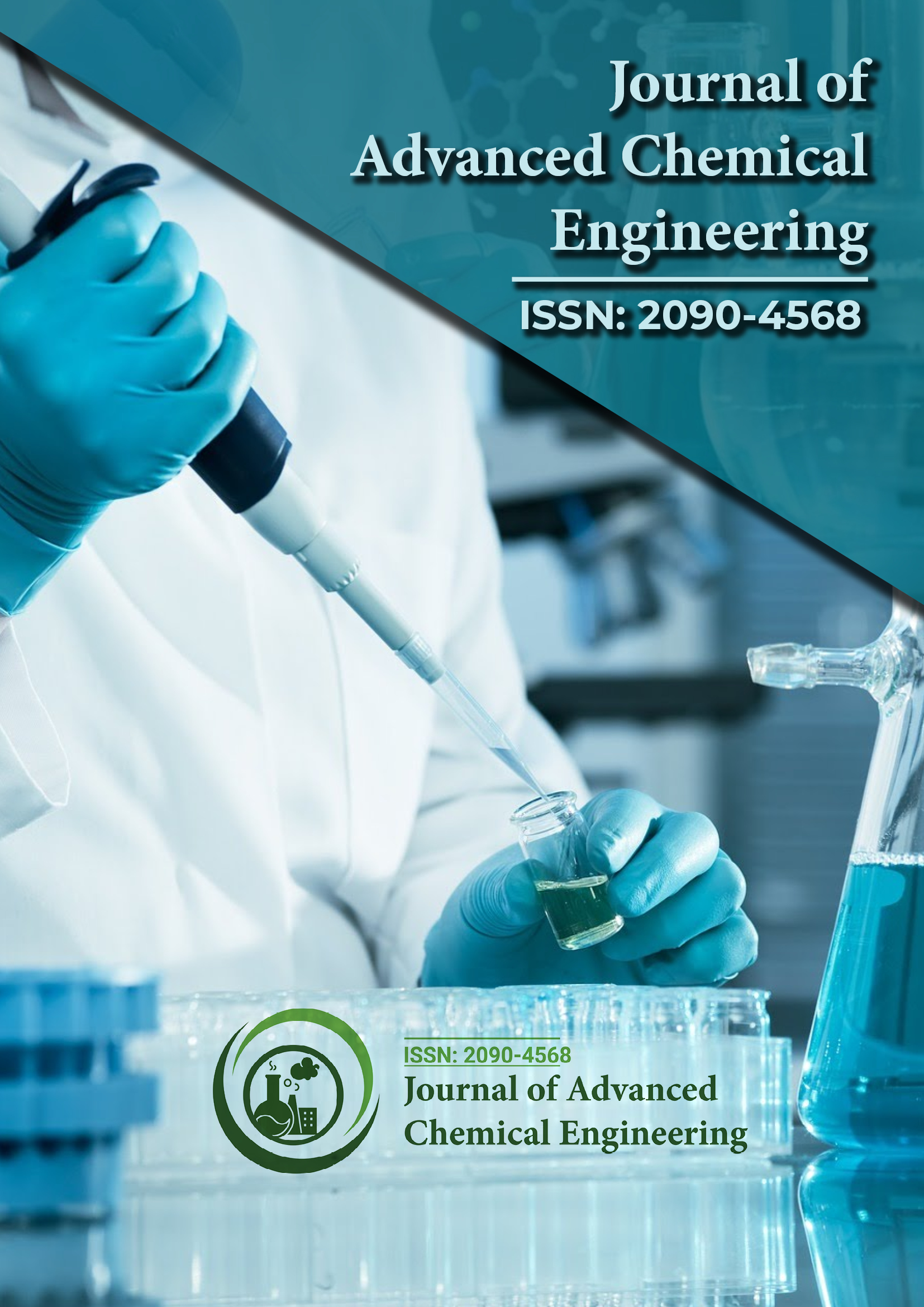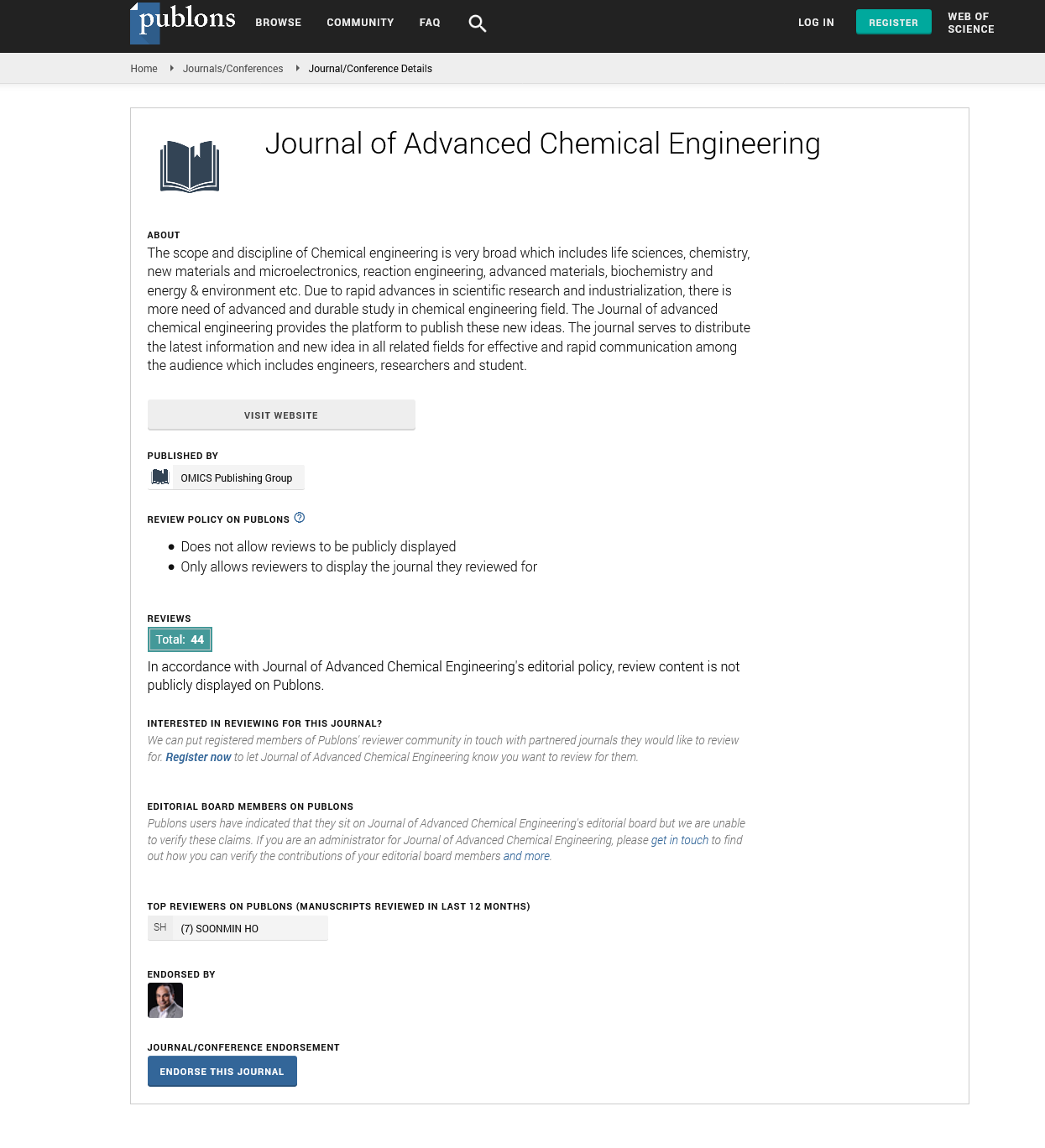Indexed In
- Open J Gate
- Genamics JournalSeek
- Smithers Rapra
- RefSeek
- Directory of Research Journal Indexing (DRJI)
- Hamdard University
- EBSCO A-Z
- OCLC- WorldCat
- Scholarsteer
- Publons
- Geneva Foundation for Medical Education and Research
- Google Scholar
Useful Links
Share This Page
Journal Flyer

Open Access Journals
- Agri and Aquaculture
- Biochemistry
- Bioinformatics & Systems Biology
- Business & Management
- Chemistry
- Clinical Sciences
- Engineering
- Food & Nutrition
- General Science
- Genetics & Molecular Biology
- Immunology & Microbiology
- Medical Sciences
- Neuroscience & Psychology
- Nursing & Health Care
- Pharmaceutical Sciences
Numerical simulation of the mass transfer in hydrophobic hollow fiber using the finite volume method
2nd International Conference on Advances in Chemical Engineering and Technology
November 16-17, 2017 | Paris, France
Zambra C
Universidad de Talca, Chile
Posters & Accepted Abstracts: J Adv Chem Eng
Abstract:
Osmotic distillation (OD) is a membrane process used to evaporate water from a feed flow at ambient temperature. The most of the current mathematical models are based on phenomenological equations for boundary conditions and an equation for the transmembrane flux regardless the geometry of the membrane. These models are unable of describe the local variation which are product of geometric variables. If these variations were known this would allow improve predictions that can deliver information to build membrane modules with optimal geometries which is very important for efficiency, scalability and durability of them. A general 2D mathematical diffusion model adapted to one cylindrical hollow fiber was solved with the classical finite volume method proposed by Patankar. The boundary conditions consider the effective water activity in the boundary layer which is calculated using the UNIFAC and ASOG models. The accuracy of the solutions obtained with finite volume method are very good for diffusion problems. This is checked comparing the numerical results of a simple case with analytical results. Based on this an algorithm is developed to calculate the diffusion coefficient of gas phase through the membrane as function of feed concentration. In the commercial hollow fiber models the flow at the surfaces it is not the same. Three boundary zones for the mass distribution are clearly defined in studies of the fluid mechanics of hollow fiber modules. This is consider to describe the total mass transfer flow in a complete module used to concentrate cranberry juice. The numerical results allowed to reproduce experimental data of volume decrease of the juice and the augment of its concentration. These studies may be used to find the diffusion coefficient of a gas in a hollow fiber membrane as a function of the feed concentration and to optimize the mass transfer in membrane modules.
Biography :
Carlos Zambra has his expertise in develop of mathematical models applied in computational mechanic to describe in two and three dimensional the transfer of momentum, heat and mass in porous medium. The main interest are the problems that involve chemical and biochemical reactions and new process such as membrane perstraction, pervaporation and membrane distillation.

